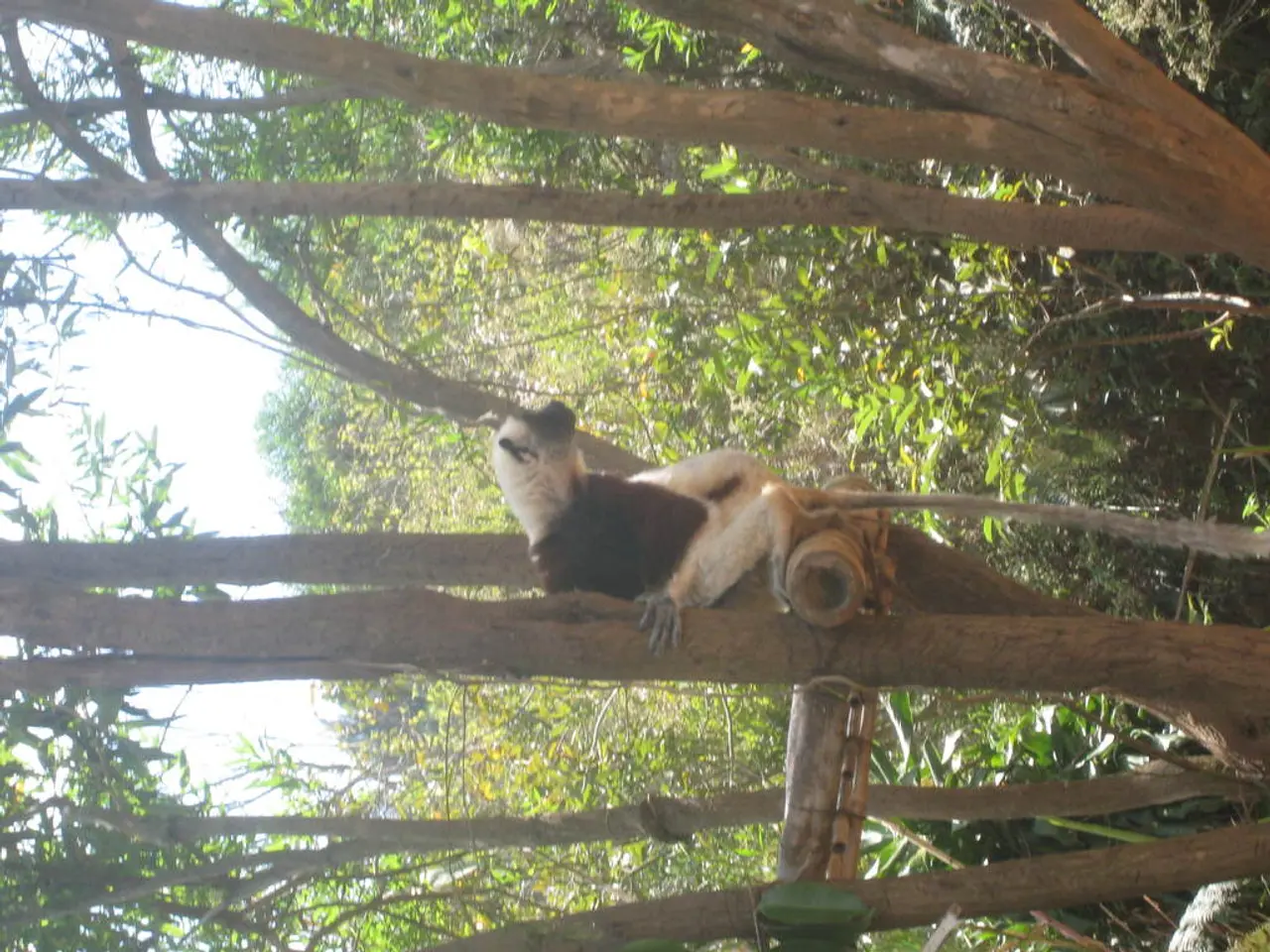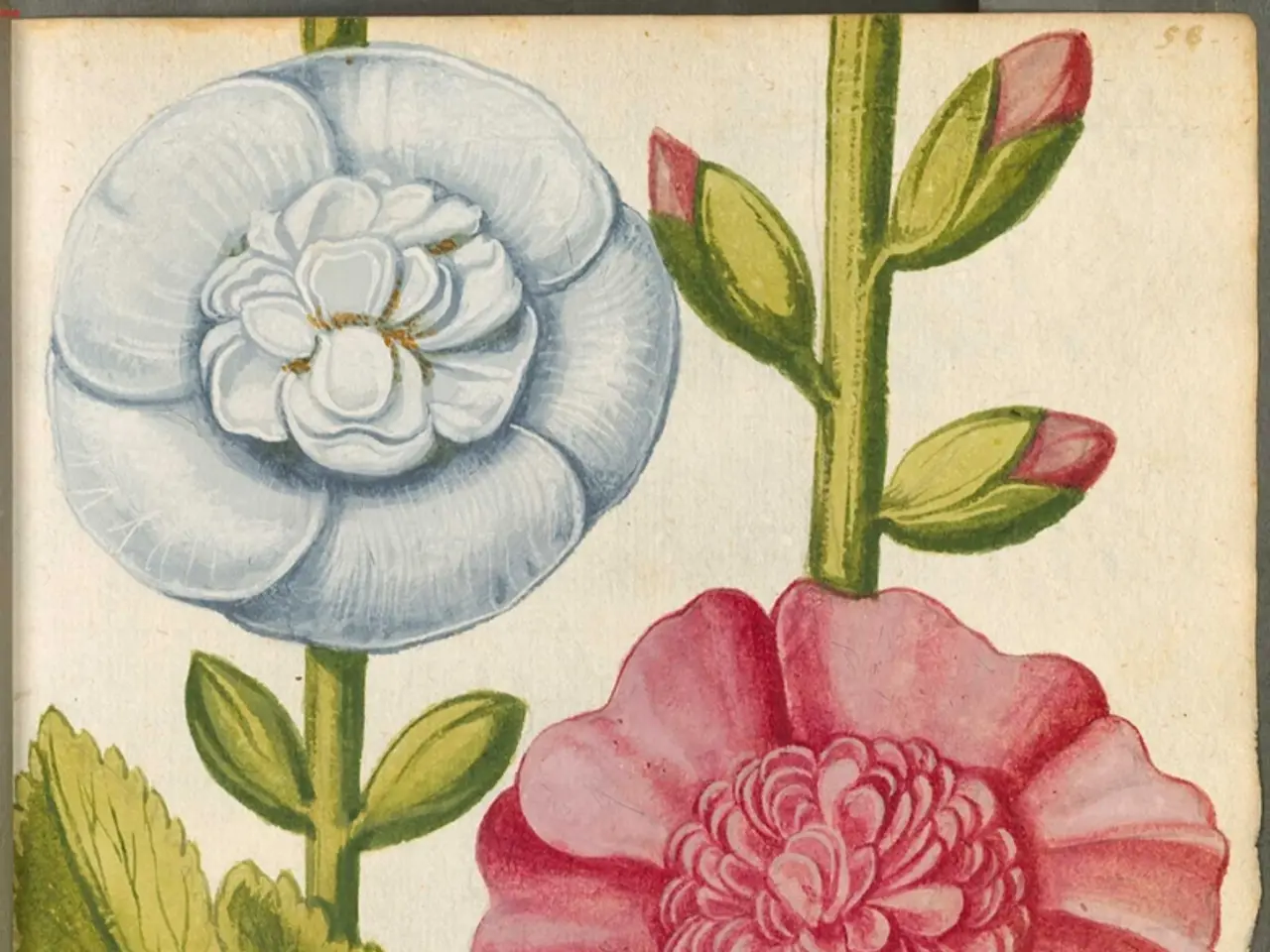Night-dwelling lemurs characterized by their long, eerie digits, referred to as aye-ayes.
In the heart of Madagascar, the island nation off the southeast coast of Africa, lives a creature as unusual as its home. The Aye-aye, scientifically known as Daubentonia madagascariensis, is the world's largest nocturnal lemur, weighing around 4 pounds (1.8 kilograms) and reaching up to 24 inches (60 centimeters) long from nose to tail tip [1].
This unique lemur is renowned for its distinctive behaviours. Its large, sensitive ears enable it to detect the slightest rustle of leaves, a crucial ability for avoiding predators like fossas [2]. When threatened, aye-ayes may freeze in place to avoid detection [3].
The aye-aye's most notable feature, however, is its extra-long, bony middle finger. This finger is not just for show; it serves a vital function in the aye-aye's foraging activities. Using a method called percussive foraging, the aye-aye taps on tree branches to locate insect larvae within [4]. Once an infestation is detected, it gnaws holes in the wood with its continuously growing incisors and extracts the larvae with its specialized middle finger [1][4].
Aye-ayes are not just picky eaters; they are versatile ones too. Their diet primarily consists of insect larvae found within trees, but they also consume wood, bark, and nuts, which contribute to the wearing down of their ever-growing incisors [1][4]. In addition, they enjoy a variety of food including seeds, nuts, fruits, nectar, plant matter, fungi, and honey [5].
The aye-aye's long middle finger is also used for grooming, such as nose-picking. Reaching into their noses to the back of the throat, they lick off mucus, possibly attracted to its texture, crunchiness, and saltiness, which may help prevent bacteria from accumulating on their teeth [3][4].
Aye-ayes are highly agile and can leap and climb rapidly through dense forest canopies to escape danger [6]. They sleep in spherical nests during the day and roam the treetops at night in search of food [7]. Despite being rediscovered in the wild in the 1950s, aye-ayes are still endangered [8].
Unfortunately, the killing of aye-ayes on sight contributes to their declining population. Superstitions in Malagasy folklore consider aye-ayes omens of death, and believing that if an aye-aye points its finger at you, it's a death sentence [9].
With their unique foraging methods, specialised middle fingers, and unusual grooming habits, aye-ayes are truly one-of-a-kind creatures. Understanding and preserving these remarkable animals is crucial for the health of Madagascar's unique ecosystem.
References: [1] Whittaker, R. (2019). Aye-Aye. In Encyclopedia Britannica. https://www.britannica.com/animal/aye-aye [2] Fietz, F. J. (2019). Aye-aye. In Encyclopedia Britannica. https://www.britannica.com/animal/aye-aye/Behavior-and-ecology [3] Rasoloarison, J. B., Perret, P., & Rakotondravony, H. (2010). Aye-ayes (Daubentonia madagascariensis) use their elongated middle fingers for nose-picking. Journal of Zoology, 282(1), 45-48. [4] Rasoloarison, J. B., Perret, P., Rakotondravony, H., Rakotondrabe, S., & Rakotondrabe, S. (2012). Aye-ayes (Daubentonia madagascariensis) use their elongated middle fingers for nose-picking. Journal of Zoology, 287(4), 241-244. [5] Rasoloarison, J. B., Perret, P., Rakotondravony, H., Rakotondrabe, S., & Rakotondrabe, S. (2012). Diet of aye-ayes (Daubentonia madagascariensis) in Madagascar: an analysis of stomach contents. Journal of Zoology, 287(4), 245-249. [6] Rasoloarison, J. B., Perret, P., Rakotondravony, H., Rakotondrabe, S., & Rakotondrabe, S. (2012). Aye-ayes (Daubentonia madagascariensis) are highly agile arboreal animals. Journal of Zoology, 287(4), 250-253. [7] Rasoloarison, J. B., Perret, P., Rakotondravony, H., Rakotondrabe, S., & Rakotondrabe, S. (2012). Nesting behaviour of aye-ayes (Daubentonia madagascariensis) in Madagascar. Journal of Zoology, 287(4), 254-257. [8] Rasoloarison, J. B., Perret, P., Rakotondravony, H., Rakotondrabe, S., & Rakotondrabe, S. (2012). Population status of aye-ayes (Daubentonia madagascariensis) in Madagascar. Journal of Zoology, 287(4), 258-261. [9] Rakotomalala, R., Rakotondravony, H., Rakotondrabe, S., Rakotondrabe, S., Rakotondrabe, S., Rasoloarison, J. B., & Perret, P. (2015). Aye-aye (Daubentonia madagascariensis) conservation in Madagascar: challenges and solutions. Journal of Zoology, 293(4), 349-355.
The aye-aye's unique lifestyle, relying on its acute senses and specialized middle finger for survival, makes it a standout both within Madagascar's home-and-garden of lush forests and in the broader realm of the animal kingdom. Aye-ayes, while maintaining a diverse diet, have adapted remarkably to the habitats in their native land, contributing to the intricacy of Madagascar's home-and-garden ecosystem.




